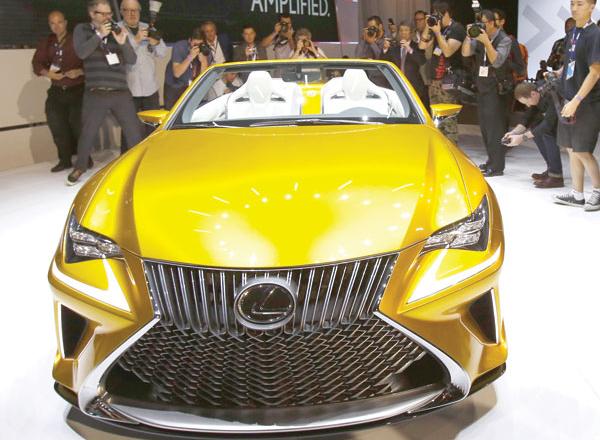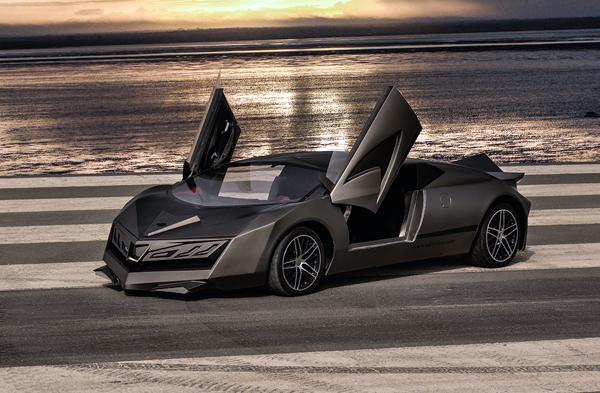You are here
Small SUVs mingle with Bugatti, McLaren supercars in Geneva
By AP - Feb 29,2016 - Last updated at Feb 29,2016
FRANKFURT, Germany — While waiting for the much-discussed future of driverless cars to arrive, European automakers are focusing on tried-and-tested sales winners at this year’s Geneva International Auto Show — rolling out the small SUVs that are increasingly replacing hatchbacks and sedans in people’s driveways.
Long after it has ceased to be an innovation, the small SUV category is drawing carmakers like catnip because it’s seen as the best chance to continue to increase sales and keep development costs down.
Europe’s car industry finally bounced back strongly in 2015 after the eurozone debt crisis that started in late 2009. Sales rose 9.3 per cent to 13.7 million vehicles in the European Union countries in 2015 and have risen now for 29 straight months.
Meanwhile, the shadow of Apple and Google hangs over the industry, as people wonder when, if and how non-industry players will compete with incumbents. There will be plenty of discussions about Internet-connected cars, car sharing apps such as GM’s Maven, and self-driving cars.
Until those driverless cars arrive, the metal on display in Geneva still represents the current model of people buying cars and driving them themselves.
Here are the most anticipated themes and vehicles at the Geneva Auto Show:
Smaller and smaller
Volkswagen AG’s luxury brand Audi offers a tiny SUV, the Q2, which is aimed at attracting younger buyers to the brand. Audi is the first of the three high-priced German carmakers — the others being Daimler and BMW — to have an SUV this small.
Analyst Tim Urquhart from IHS Automotive said the business rationale is compelling. He said Volkswagen, like other carmakers, can use engines and transmissions from other models, in this case the Audi A3 compact car, “and get two cars for the price of one”.
“The public sees a brand-new model — but the research and development costs are relatively little,” he said.
The Q2 will also likely share some components with a nearly production-ready Volkswagen-branded concept SUV that’s also on display. Concepts are cars meant to show possible new designs, with only some eventually being produced.
There’s more.
Volkswagen’s SEAT brand offers its mid-sized Atec on underpinnings shared with the Leon hatchback, giving the brand its first SUV offering; Skoda, another VW brand, has an SUV concept.
And Fiat Chrysler Automobile’s Maserati brand is coming with the Levante, an SUV crossover that offers powerful 350-horsepower and 430-horsepower engines and a silhouette that stands out due its sharply tapered back window. A crossover combines SUV features such as higher driver seating and lots of cargo room in back with a lower, sloping roofline more like a sedan.
Speed machines
It wouldn’t be an auto show without stunning vehicles like Bugatti’s Chiron, the successor to its 258-mph Veyron supercar. Photos show a low-slung sports car with a wrap-around windshield and the distinctive oval Bugatti front grille.
McLaren is offering the 570GT, a sleek two-seater that reaches 100kph in only 3.4 seconds. The company says it aimed to make a car that’s comfortable for weekend trips and long-distance drives, despite its racing-level performance. They gave it eight-way adjustable power seats, a touchscreen to control air conditioning and music, a large glass rear hatch to let in light and create a relaxed environment, and a lower door sill to make it easier to climb in and out.
Prices start at $199,950; the company is taking orders for delivery globally in late 2016.
The future
Auto executives say their industry is on the verge of wide-ranging transformation powered by the Internet, information technology and changing attitudes towards the automobile. There will be much talk of such themes in Geneva, but the actual vehicles, businesses and technologies may take years to appear.
US automaker General Motors is experimenting with a car-sharing programme called Maven, in which people reserve cars using an app and then use their phones to unlock and drive the vehicle.
Consulting firm EY and Swiss think tank Rinspeed are showcasing their Etos concept of a self-driving sports car that has a retractable steering wheel that clears more space for the driver, an entertainment system that anticipates user preferences and an on-board drone with its own landing platform. In one sign of the increasing convergence of tech and autos, the car has already been seen by the public — at the Consumer Electronics Show in Las Vegas.
Efficent luxury
BMW is offering its large 7-Series sedan as a plug-in hybrid, for which it will even come install a charging station at your house. The vehicle uses technology from the Munich-based company’s all-electric i-series models such as the i3 and the i8, including light-weight materials and battery and charging technology.
Analyst Urquhart says higher-price brands are combining efficient technology with high power as a selling point, “so it’s smart performance, and not just out-and-out performance”. The robust acceleration of electric motors is an added advantage.
For those who just want the power, BMW offers a 7-Series M version — the company’s performance designation — with a 12-cylinder, 600-horsepower gasoline engine that will accelerate to 100kph in a brisk 3.9 seconds.
Related Articles
Few people need an SUV with 567 horsepower that can scream around a racetrack and go from 0 to 60 in four seconds.
One of the Middle East’s biggest auto exhibitions, the annual Qatar Motor Show is undoubtedly an important national event for carmakers to s
Awarded top honours at the annual Middle East Car of the Year (MECOTY) ceremony, the Volvo XC90 becomes the third car to win the prestigious


















